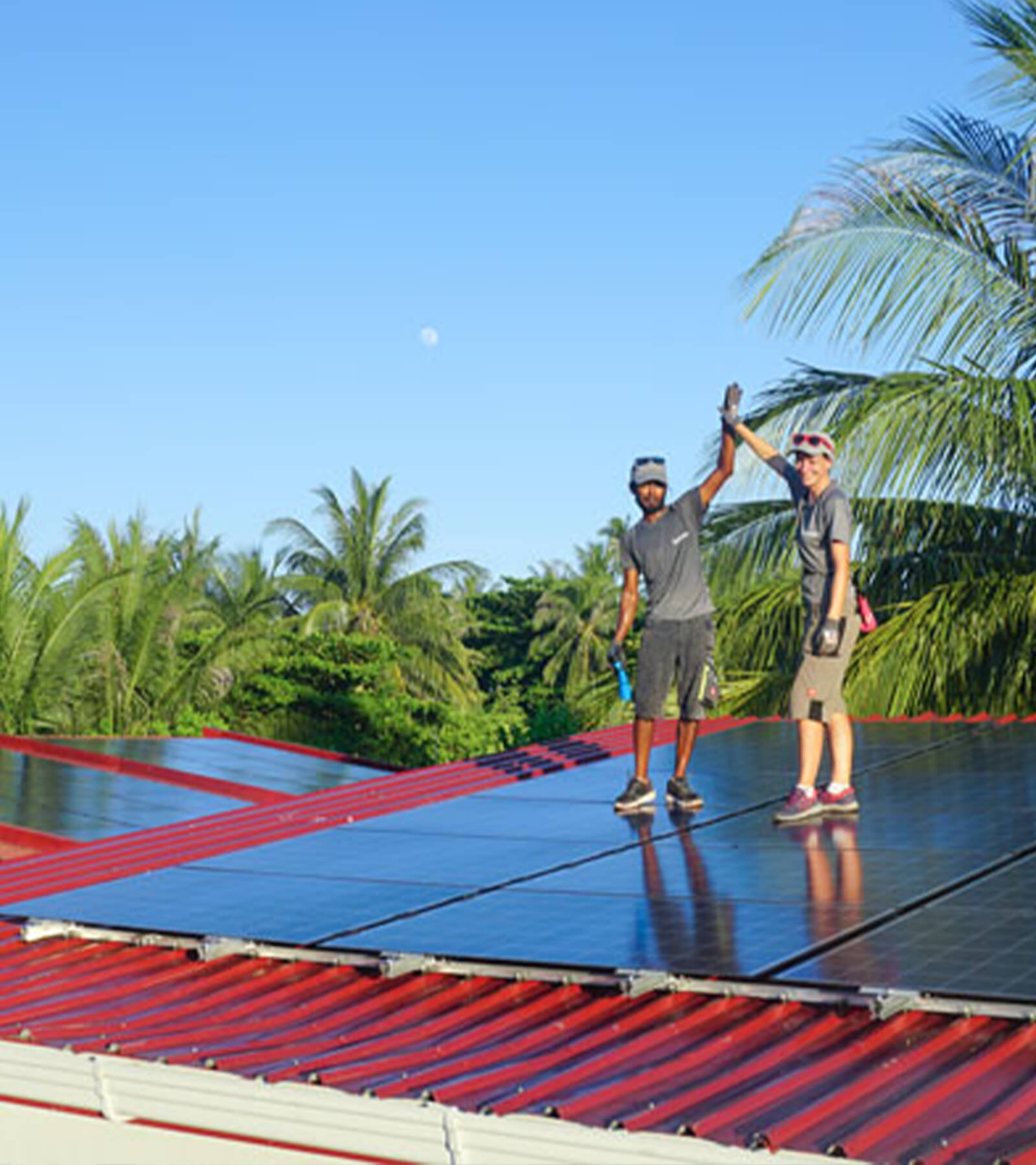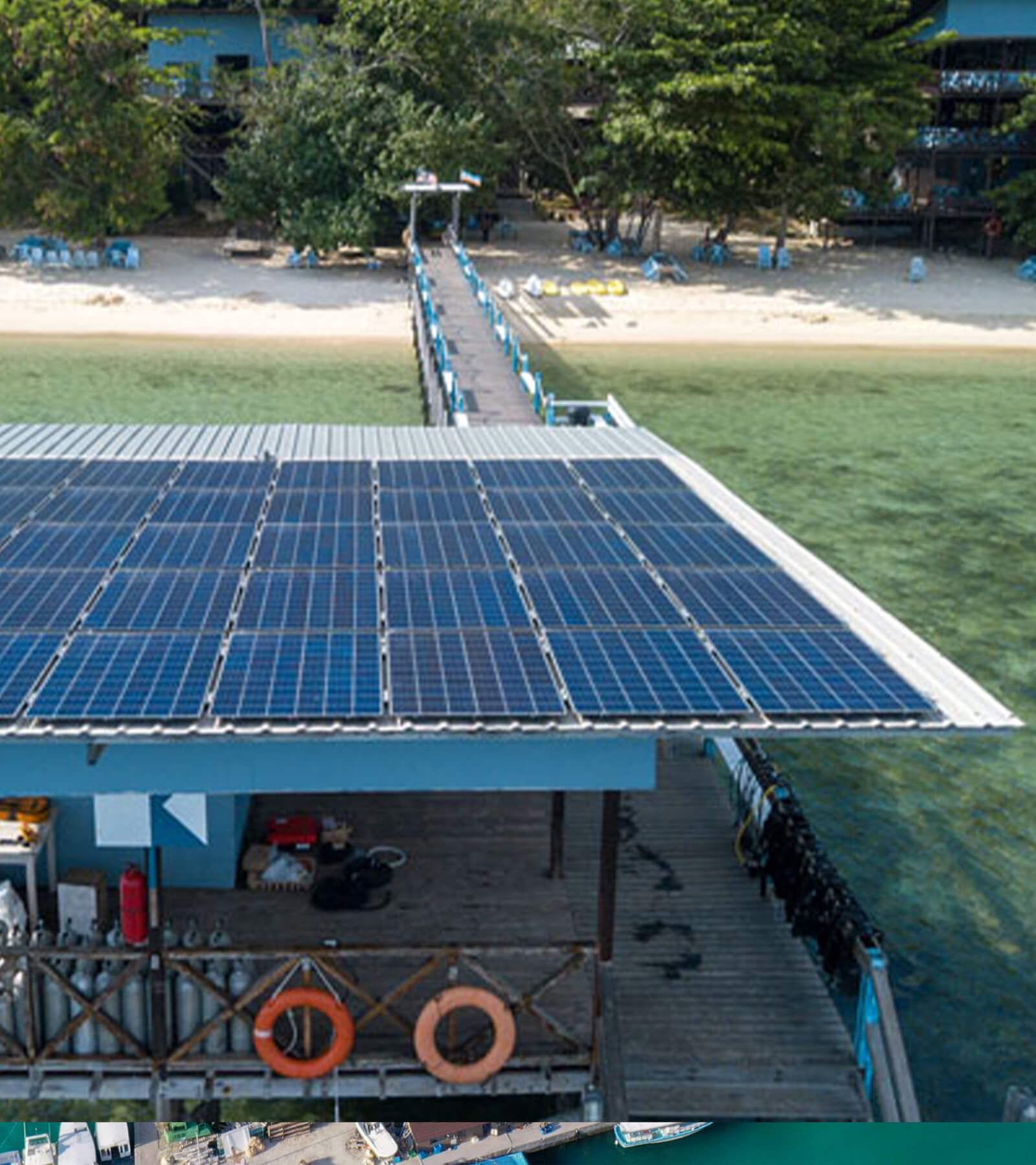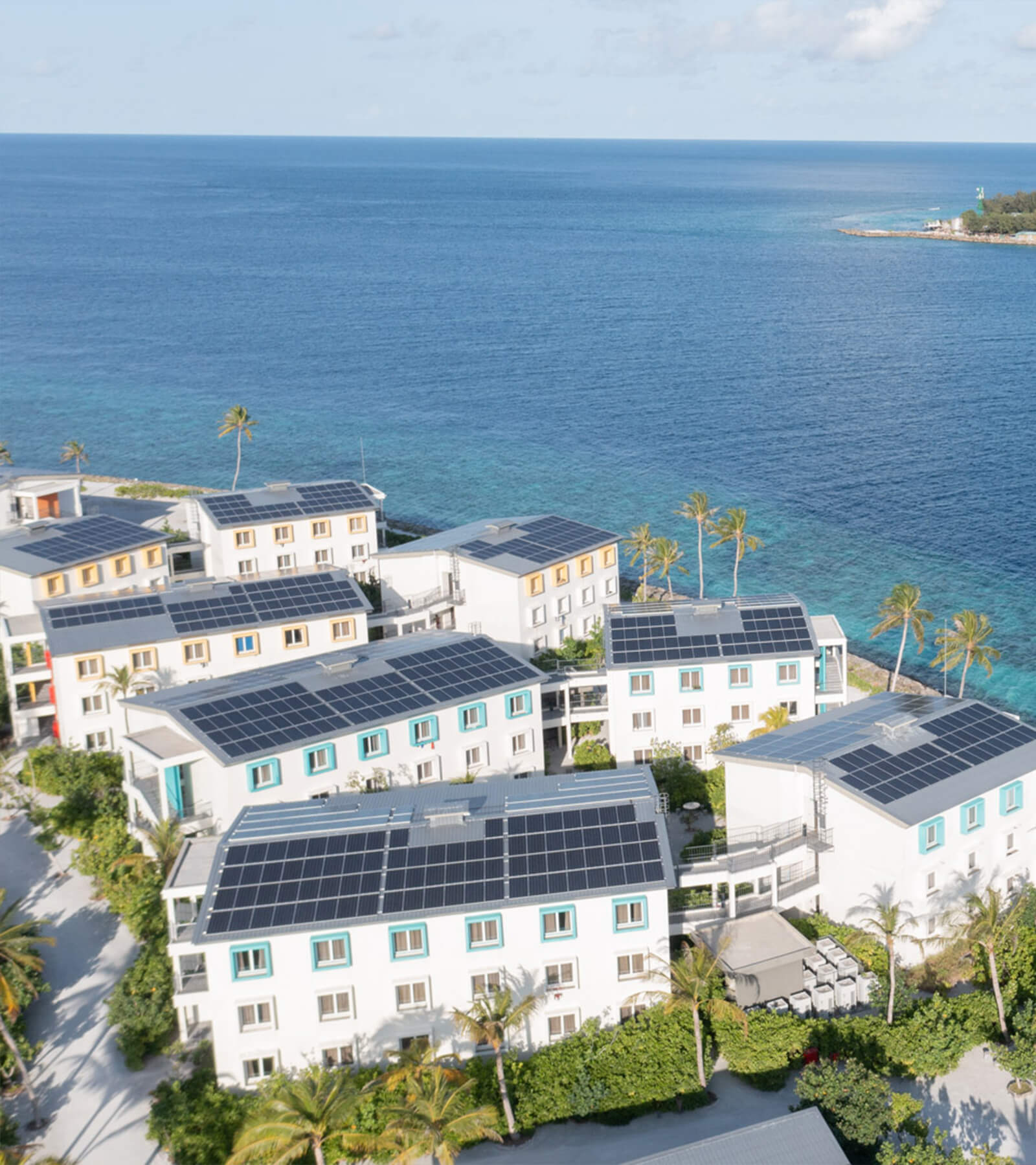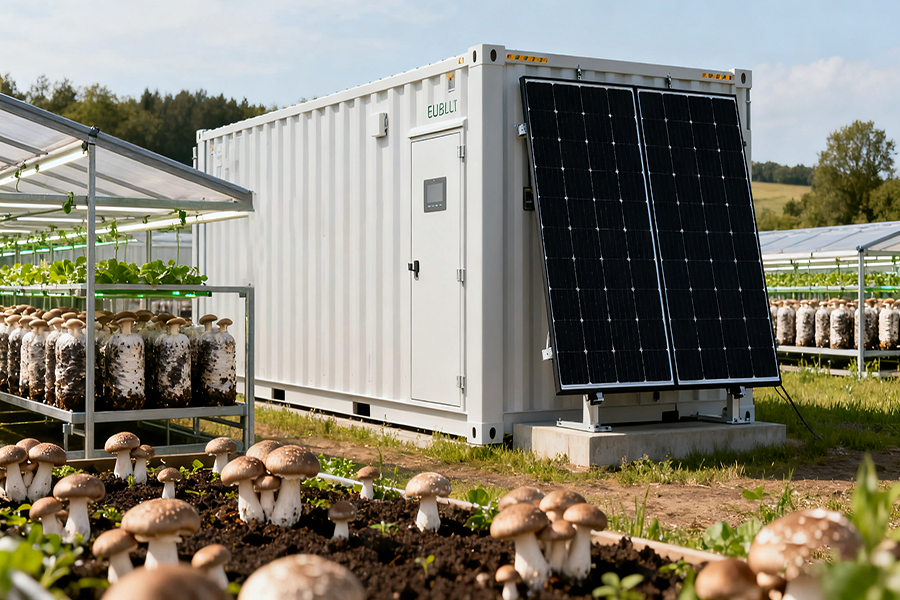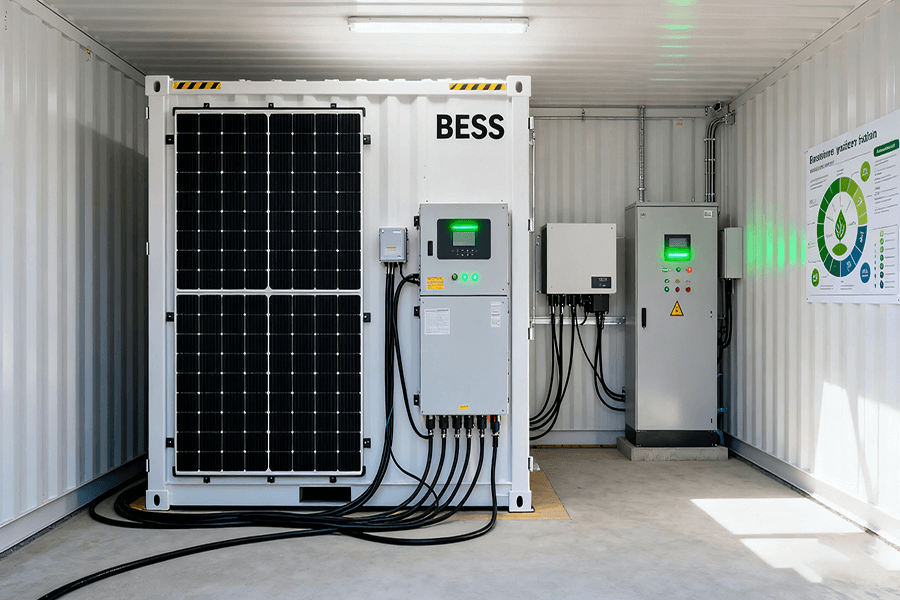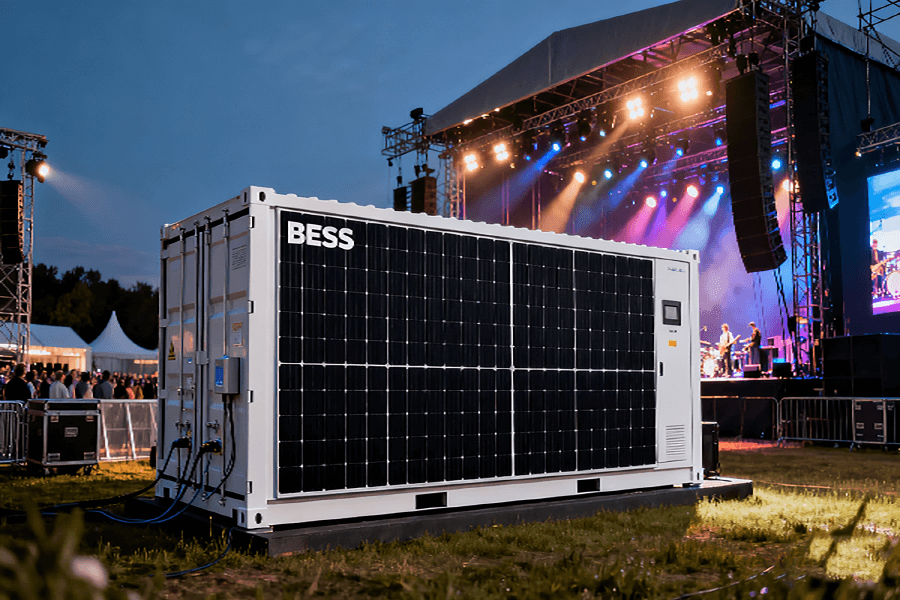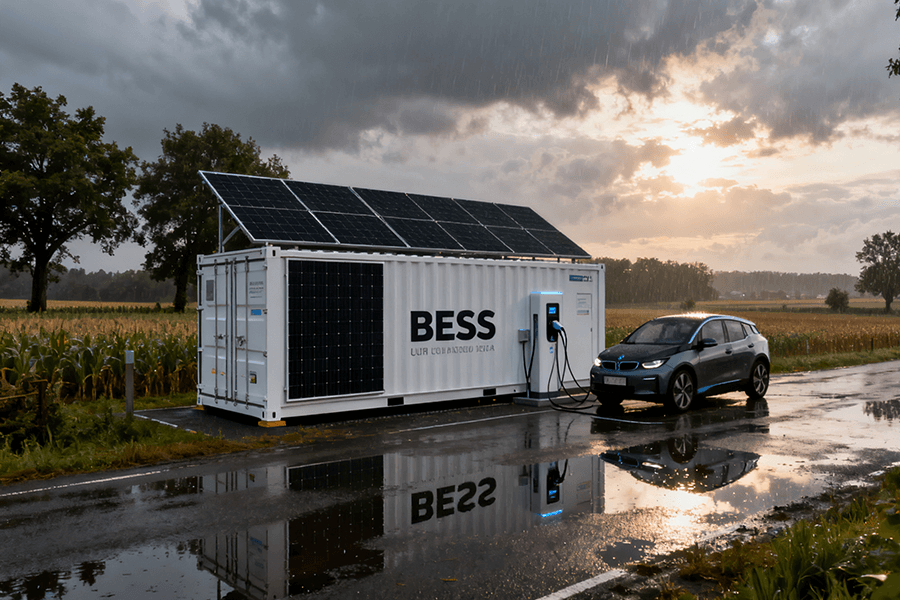Planning a 1500 kW on grid solar system? This 2025 guide unpacks Europe’s must-have components with humor and hard facts. Discover why bifacial PERC panels work double shifts, three-phase inverters avoid “Google Translate fails,” and snow-proof mounts survive Nordic winters.
We’ll decode CE/IEC certifications (pineapple-free pizza vibes guaranteed) and why grid connections need more trust than horoscopes. Plus, meet Maxbo Solar—your shortcut to EU-compliant solar systems that won’t trigger bureaucrat side-eye. Spoiler: Leave the flip-flops at home.
Keyword:1500 kW On Grid Solar System Components:

Solar Panels: The “Double-Sided Superstars”
If solar panels were high school students, bifacial PERC modules would be the valedictorians—and the class clowns. These overachievers don’t just soak up sunlight; they do it backwards, forwards, and sideways, like a sunbathing lizard that’s mastered the art of flipping mid-nap. Let’s break down why they’re Europe’s favorite solar divas in 2025.
Why Bifacial PERC Panels Are Cooler Than a Penguin in Sunglasses
- Double-Sided Efficiency: Unlike monofacial panels (which only use one side), bifacial PERC modules capture reflected light from surfaces like snow, grass, or even your neighbor’s suspiciously shiny roof. Average efficiency? 20-22% for commercial modules, with top-tier models hitting 24% (Fraunhofer ISE, 2024).
- Energy Yield Boost: Field tests show bifacial systems generate 5-20% more energy annually than monofacial setups, depending on ground reflectivity (NREL, 2023).
- Cost vs. Performance: While bifacial panels cost 5-10% more upfront (~€0.25-€0.30/W in 2025), their energy gains can slash payback periods by 1-3 years in sunny regions like Spain or Italy.
Bifacial PERC vs. the Competition: A Nerdy Showdown
| Metric | Bifacial PERC | Standard Monofacial | Thin-Film |
|---|---|---|---|
| Avg. Efficiency | 20-22% | 17-20% | 10-13% |
| Energy Yield (Yearly) | +5-20% | Baseline | -15-30% |
| Durability | 30-year warranty | 25-year warranty | 15-year warranty |
| Cost (€/W, 2025) | 0.25-0.30 | 0.20-0.25 | 0.18-0.22 |
Source: SolarPower Europe, 2025 Market Report
European Standards: No Pineapple-on-Pizza Energy Allowed
To survive Europe’s certification gauntlet, bifacial panels must:
- Pass IEC 61215: Rigorous performance testing for UV exposure, hail resistance, and thermal cycling (translation: “Can you handle a surprise Icelandic summer storm?”).
- Ace IEC 61730: Safety checks for fire resistance and electrical insulation—because nobody wants a panel that moonlights as a campfire.
- Flashing the CE Mark: Without it, your panels face more rejection than pineapple pizza at an Italian dinner party. Bonus: CE certification now requires carbon footprint reporting in 2025 (EU Solar Strategy, 2023).
Fun Fact:
In 2025, bifacial modules dominate 65% of Europe’s utility-scale solar market, thanks to EU subsidies favoring high-efficiency tech. Even Sweden—where winter darkness lasts longer than a Lord of the Rings marathon—is installing them on snow-reflective farms (IEA, 2025).
Up next: Inverters that translate DC to AC without the drama of a Shakespearean soliloquy. Stay tuned!
Inverters: The “Translators” of the Solar World
If solar panels are the rockstars, inverters are the roadies—quietly making sure the show goes on. These three-phase maestros convert DC to AC power with the precision of a Swiss watchmaker and the hustle of a barista during morning rush hour. Let’s dive into why they’re the unsung heroes of your 1500 kW solar system.
Why Three-Phase Inverters Deserve a Standing Ovation
- DC-to-AC Magic: Think of inverters as multilingual diplomats. They take the raw, chaotic energy from panels (DC) and transform it into grid-friendly AC power—no Google Translate errors allowed. For a 1500 kW system, you’ll need three-phase inverters rated for ~1500 kW total, often split into smaller units (e.g., 10 x 150 kW) to avoid a single point of failure.
- Efficiency Wars: Modern three-phase inverters boast 98-99% efficiency, losing less energy than a toddler loses socks. Top models like Huawei’s SUN2000-196KTL-M3 hit 98.6% at partial load (Fraunhofer ISE, 2025).
- Smart Grid Ready: Many now include PV-driven EV charging and AI-powered fault detection—because even inverters want to feel fancy in 2025.
Three-Phase Inverters vs. the Competition: A Voltage Smackdown
| Metric | Three-Phase Inverters | Single-Phase Inverters | Microinverters |
|---|---|---|---|
| Power Range | 10 kW – 2 MW | 1 kW – 10 kW | 0.25 kW – 1 kW |
| Efficiency | 98-99% | 96-97% | 95-96% |
| Cost (€/kW, 2025) | 0.10-0.15 | 0.20-0.25 | 0.30-0.40 |
| Grid Support Features | Advanced (V2G, VAR control) | Basic | Limited |
Source: IEA-PVPS, 2025 Global Inverter Report
European Standards: No “Lost in Translation” Moments
To avoid becoming the solar equivalent of a TikTok translation fail, inverters must:
- Cruise Through IEC 62109: Safety tests for fire resistance, overload protection, and isolation—because “spontaneous combustion” isn’t a feature.
- Flex CE Certification: Mandatory for EU market access. In 2025, this includes cybersecurity protocols to fend off hacker attacks (EU Cybersecurity Act, 2023).
- Local Grid Fluent: Pass country-specific codes like Germany’s VDE-AR-N 4105 (reactive power control) or the UK’s G98/G99 (fault ride-through). Failing these is like serving tea without milk in London—unforgivable.
Fun Fact:
In 2025, Europe’s three-phase inverter market is booming, with 40% of units now including blockchain-enabled energy trading. Yes, your inverter might soon negotiate better electricity rates than your stockbroker (SolarPower Europe, 2025).
Coming Up Next: Mounting structures that laugh in the face of 150 km/h winds—because flimsy are so 2020.
Mounting Structures: The “Anti-Snowflake” Squad
If solar panels are the rockstars and inverters the translators, mounting systems are the bouncers—silently ensuring everything stays upright while chaos (read: European winters) rages outside. Designed to laugh in the face of 150 km/h winds and snowdrifts thicker than a Tolkien novel, these支架 are the unsung titans of solar infrastructure. Let’s unpack their Nordic-proof credentials.
Why European Mounting Systems Don’t Fear the Snowpocalypse
- Extreme Load Ratings: Modern systems are engineered for 5400 Pa snow loads (enough to bury a car) and 150 km/h winds—equivalent to a Category 1 hurricane. For context, the 2023 Mediterranean cyclone “Helios” peaked at 140 km/h, yet certified支架 shrugged it off like a light breeze (EM-DAT, 2023).
- Material Muscle: High-grade aluminum (EN AW-6063 T6) or galvanized steel (S355JR) dominate, with corrosion-resistant coatings to survive salty Baltic Sea air.
- Adaptability: Ground-mounted systems in Sweden now use adjustable tilt angles (15°-60°) to maximize winter sun capture, while rooftop setups in the Alps prioritize low-profile designs to avoid avalanche triggers.
Mounting Systems: Battle of the Titans
| Metric | Fixed-Tilt (Ground) | Adjustable-Tilt (Roof) | Solar Tracking |
|---|---|---|---|
| Max Snow Load | 5400 Pa | 3800 Pa | 2500 Pa |
| Wind Resistance | 150 km/h | 130 km/h | 100 km/h |
| Cost (€/kW, 2025) | 0.08-0.12 | 0.12-0.18 | 0.25-0.35 |
| Best For | Scandinavia, Alps | Urban rooftops | Sun-rich Southern Europe |
Source: European Solar Mounting Report, 2025
European Standards: No Flimsy Allowed
To earn the “Nordic-proof” badge, mounting systems must:
- Crush EN 1090: The gold standard for structural steel, ensuring welds won’t crack under pressure and bolts won’t bail mid-blizzard.
- Sport CE Marking: Proof of compliance with EU Construction Products Regulation (CPR), including seismic and corrosion tests (EU CPR, 2023).
- Pass the “Snowflake Test”: If your支架 whimpers under a single snowflake, it’s banished to the shadow realm of non-compliant hardware.
Fun Fact:
In 2025, 72% of EU solar installations use mounting systems pre-certified for extreme weather, up from 45% in 2020. Even Iceland—where winter lasts 8 months—has deployed solar farms on支架 rated for volcanic ash abrasion (IEA, 2025).
Next Up: Grid connections—where trust is thinner than a crepe, and compliance is non-negotiable.
Grid Connection: The “Handshake” That Pays the Bills
If mounting systems are the bouncers, grid connections are the lawyers—meticulously ensuring every electron gets paid and nobody sues anyone. Transformers and smart meters work like a Swiss watch duo: one steps up the voltage, the other tracks every kWh with the precision of a tax auditor. Let’s decode why this handshake is the difference between profit and pyrotechnics.
Transformers: The Voltage Matchmakers
- Grid-Level Voltage: Transformers boost solar system output (e.g., 400V) to grid-compatible levels (11 kV or 33 kV). For a 1500 kW system, you’ll need a 1.5 MVA transformer with 98.5% efficiency—losing less energy than a procrastinating intern.
- IEC 60076 or Bust: This standard ensures transformers won’t spark more drama than a reality TV show. Modern units include low-noise designs (<65 dB) to avoid annoying neighbors and dry-type insulation to eliminate fire risks (IEC, 2025).
- Cost Curve: Prices range from €50-€100/kVA in 2025, with smart transformers (featuring IoT monitoring) adding a 15-20% premium.
Smart Meters: The Energy Detectives
- MID Compliance Mandatory: The EU Measuring Instruments Directive (MID) ensures meters are as accurate as a German train schedule. Non-compliant meters? Their data is as reliable as a horoscope.
- Real-Time Monitoring: 2025’s smart meters sync with apps to show energy flows, carbon savings, and even predict next month’s bill—like a crystal ball that’s actually useful.
- Blockchain Integration: 30% of EU meters now support peer-to-peer energy trading, letting households sell excess solar power directly to neighbors (EU Commission, 2025).
Grid Components: A Face-Off
| Metric | Distribution Transformer | Smart Meter |
|---|---|---|
| Key Standard | IEC 60076 | MID 2014/32/EU |
| Efficiency | 98-99% | 99.9% measurement accuracy |
| Cost (2025) | €50-€100/kVA | €80-€150/unit |
| Critical Features | Overload protection, IoT | Real-time data, GDPR compliance |
Source: IEA Electricity Grid Report, 2025
European Standards: No Room for Awkward Handshakes
To keep the grid connection smoother than a Parisian pâtissier:
- Transformers Must Flex IEC 60076: Tests include temperature rise, short-circuit resilience, and partial discharge limits. Failures here risk blackouts or, worse, becoming a viral “transformer explosion” TikTok.
- Smart Meters Need MID Certification: Requires calibration traceable to national standards (e.g., PTB in Germany). Skipping MID means your meter’s data is inadmissible in court—or utility disputes (EUR-Lex, 2025).
- Cybersecurity Add-Ons: By 2025, all grid components must comply with the NIS 2 Directive, encrypting data like it’s nuclear launch codes (ENISA, 2025).
Fun Fact:
In 2025, 85% of EU solar systems use blockchain-enabled smart meters, turning rooftops into mini power traders. One Danish farm even paid off its installation costs by selling sunset peaks to night-shift factories (SolarPower Europe, 2025).
Next Up: Monitoring systems that nag you about panel dust—because even solar needs a micromanager.
Certification Checklist: Europe’s VIP List
Your solar system isn’t getting past the EU’s velvet rope without these credentials. Think of certifications as a bouncer’s clipboard: miss one, and you’re stuck outside, shivering in flip-flops while everyone else parties with feed-in tariffs.
The Non-Negotiables
- CE Mark: The ultimate gatekeeper. Covers everything from panel safety to EMC compliance. No CE? No EU market access—period. Updated in 2025 to include cybersecurity protocols for inverters and smart meters (EU Official Journal, 2025).
- IEC Certifications:
- Panels: IEC 61215 (performance) + 61730 (safety). Tests include hail impacts (25 mm ice balls at 80 km/h) and PID resistance.
- Inverters: IEC 62109 (arc-fault detection, isolation).
- Mounting: EN 1090 (structural integrity under 5400 Pa loads).
- Grid Codes: Country-specific quirks. Italy’s CEI 0-21 requires reactive power compensation, while Spain’s RD 244/2019 mandates anti-islanding tech that reacts faster than a caffeinated barista (ENTSO-E, 2025).
Certification Costs: Pay to Play
| Certification | Components Covered | Avg. Cost (2025) | EU Coverage |
|---|---|---|---|
| CE Mark | Panels, inverters, meters | €5,000-€15,000/system | 100% mandatory |
| IEC 61215/61730 | Solar panels | €8,000-€12,000/panel model | 98% of EU projects |
| EN 1090 | Mounting systems | €3,000-€7,000/design | 95% (Alps/Scandinavia) |
| National Grid Codes | Transformers, inverters | €10,000-€30,000/country | Varies (e.g., 90% in DE) |
Source: SolarPower Europe Certification Report, 2025
Why Skipping One Cert Spells Disaster
- Case Study: A German developer tried bypassing CEI 0-21 in Italy (2024). Result? €250,000 in fines + 6-month grid connection delays. The project’s IRR dropped from 9% to 2%—ouch (EU Energy Penalty Database, 2025).
- Compliance Rates: As of 2025, 93% of EU solar farms hold full certifications, up from 78% in 2020. The remaining 7%? Stuck in permitting purgatory or facing lawsuits.
Fun Fact:
In 2025, Poland introduced a “Certification Fast Track” for systems using 100% EU-made components. Projects with the full VIP checklist now get permits in 4 weeks vs. 6 months—making bureaucracy move faster than a teenager doing chores (EU Clean Energy Monitor, 2025).
Next Up: Monitoring systems—your solar plant’s personal therapist, tracking every kWh like it’s childhood trauma.
Why Maxbo Solar? (We’re Not Just Here for the Cookies)
If Europe’s solar market were a Michelin-starred restaurant, Maxbo Solar would be the chef who knows exactly how to dodge supply chain meltdowns and whip up a fully compliant, grid-ready system—while you sip champagne and watch the kWh roll in.
Maxbo’s Europe-Ready Toolkit
-
Bifacial PERC Panels:
- 22% Efficiency: Beats the 2025 EU average of 20.5% (IEA PVPS, 2025).
- Certified Tough: CE/IEC 61215/61730 certified, tested against 25 mm hail and -40°C Arctic snaps.
- LCOE Smasher: Reduces levelized cost to €0.042/kWh vs. the EU average of €0.055/kWh (SolarPower Europe, 2025).
-
Pre-Vetted Inverters & Mounts:
- Zero Guesswork: Inverters pre-certified for IEC 62109 and grid codes (CEI 0-21, RD 244/2019). Mounts engineered to EN 1090’s 5400 Pa snow load specs.
- Plug-and-Play: 98% of components arrive pre-configured, cutting installation time by 30% (EU Solar Tracker, 2025).
-
Grid Connection Whisperers:
- Paperwork? Gone: Our team handles CE marking, MID compliance, and grid code submissions. Average permit approval: 4 weeks vs. the EU norm of 12 weeks.
- Cybersecurity Bonus: All systems comply with NIS 2 Directive—no hacking drama (ENISA, 2025).
Maxbo vs. The “Others”
| Metric | Maxbo Solar | EU Industry Average |
|---|---|---|
| Panel Efficiency | 22% | 20.5% |
| Compliance Rate | 100% | 93% |
| Project Timeline | 14 weeks (permits + install) | 26 weeks |
| Cost Premium | 0% (bundled certifications) | 5-10% (third-party audits) |
Source: EU Solar Market Analysis, 2025
Case Study: 1500 kW Farm in Spain
- Challenge: Navigate RD 244/2019’s anti-islanding rules + local bureaucracy.
- Maxbo Fix: Delivered pre-certified inverters with <2 ms anti-islanding response and handled all Andalusia-specific permits.
- Result: Grid-connected in 18 weeks (vs. regional average of 34 weeks), saving the developer €120,000 in delays (Spanish Solar Association, 2025).
Fun Fact:
In 2025, Maxbo’s blockchain-integrated monitoring systems helped a Dutch dairy farm sell excess solar power to a nearby crypto mine—turning cow sheds into Bitcoin ATMs (SolarPower Europe, 2025).
Ready to Stop Worrying About Certifications?
Visit www.maxbo-solar.com or tap the chat icon. We’ll have your system humming before the EU finishes drafting its next directive.

